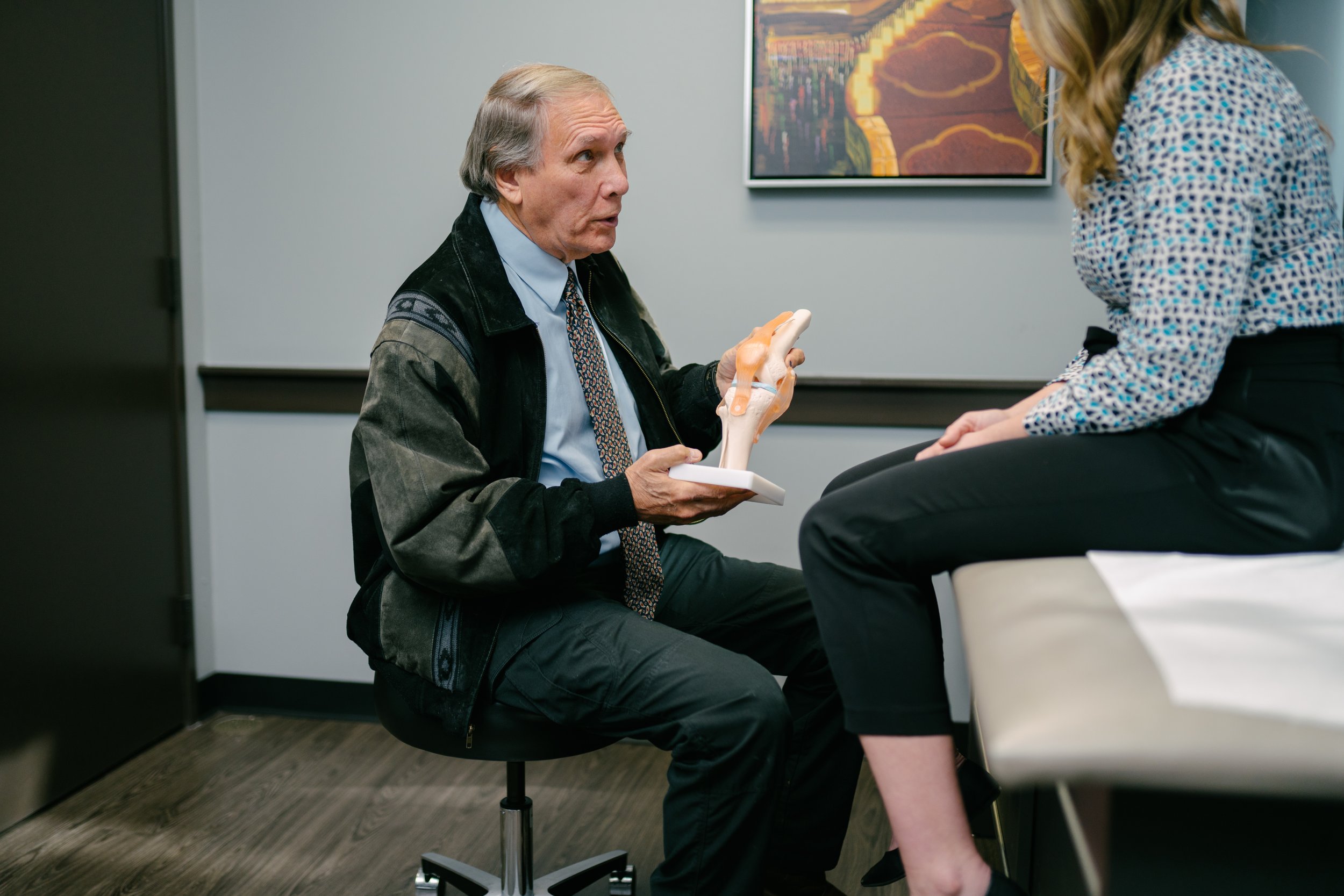What Is the Cause of Your Knee Pain?
Often, when patients experience knee pain, the first step they take is to consult with a knee specialist in order to discover the problem. There are many causes to knee pain, such as arthritis, sprains, strains, etc. In addition, knee pain can also be caused by problems with your back, hips, or feet. Weird right?
Most patients are shocked to learn that their hip is the problem, not their knee! How is this possible, you may ask? Stay tuned to learn more about how your hips are connected to your knees - and what you can do to relieve knee pain.
Hip & Knee Anatomy
The knee and hip joint is an incredibly complex, yet essential part of the body. An intricate network of bones, muscles, ligaments and tendons act in concert to allow us to perform a wide variety of actions, from walking and running to squatting and jumping. The fundamental structure of both joints consists of two main bones: one that serves as the 'ball' (femur for the hip, tibia for the knee) as well as another that serves as a 'socket' (acetabulum for the hip, patella for the knee). Additional bones like fibulas or certain cartilages also play important roles in helping support these movements. While each joint provides its own unique mechanics, they rely on mutual support structures (ligaments) to ensure they are functioning properly. Understanding how these sophisticated systems work together is critical to overall health, fitness, and performance.
IT’S NOT YOUR KNEE – IT’S YOUR HIP!
Knee pain is a common ailment and can be caused by overuse or injury. However, the root cause of knee pain isn’t always obvious; more often than not, it is actually a hip problem radiating down to the knee. That said, it is important to identify the source of pain accurately before beginning any treatment. This means taking a close look at both hips and knees in order to pinpoint which structure is actually injured. Consequently, diagnosing and treating knee pain without considering the hip may have limited results and increased frustration. Taking these measures will not only help manage symptom relief but also put you on track for long-term success.
When Should You Visit With A Physician?
Oftentimes, knee pain can be a sign of a minor issue that can be addressed at home. Rest and the application of cold compresses are usually enough to alleviate the discomfort. However, it's important to keep in mind that persistent or severe knee pain could be a symptom of an underlying medical condition requiring treatment. Seeking medical advice is particularly important if the knee pain has lasted longer than 10 days, if there is joint swelling or bruising, or if it was caused by trauma. With proper examination and tests such as X-rays, MRIs, and ultrasounds, your doctor will be able to diagnose and treat any potential injury or condition effectively.
“Don't be surprised if you're coming complaining about your hip or your knee and your doctor is examining other parts. That's all part of what's necessary to be done.” - Dr. Hibberd
Don't let your pain keep you from living an active, healthy life!
Hip or knee pain can be discouraging and can be a considerable impediment to an active, healthy life. However, the right resources and treatments can help mitigate the pain and keep you exercising, socializing, and generally enjoying your daily activities. There are a number of treatments available including -
Exercise
Medication
Acupuncture
Physical Therapy
The list goes on!
It is essential to take knee and hip pain seriously - don't wait too long before you talk with a specialist. If you are ready to take control of your hip or knee pain, schedule an appointment with one of our physicians below!





